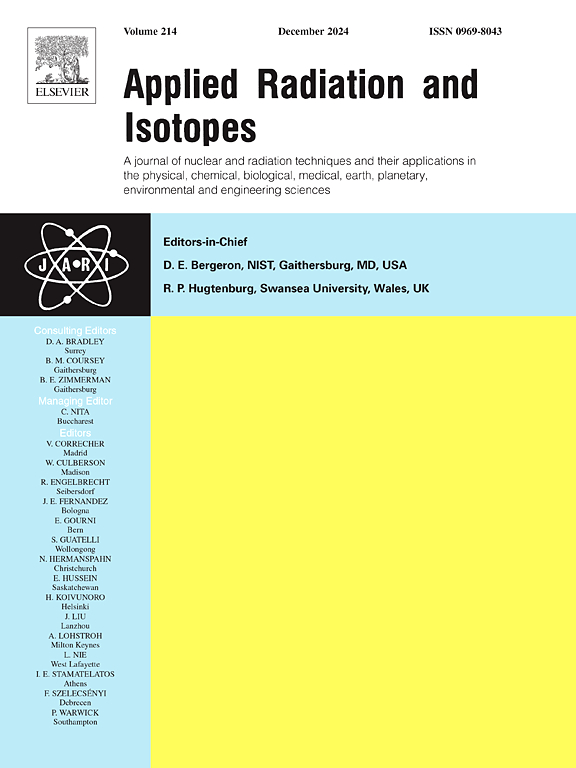掺钕 CaYAl3O7 单晶体的近红外闪烁特性。
IF 1.6
3区 工程技术
Q3 CHEMISTRY, INORGANIC & NUCLEAR
引用次数: 0
摘要
我们采用浮区法制备了不同掺钕浓度(0.1、0.5、1.0、5.0、10 和 20%)的 CaYAl3O7 单晶。研究了所有样品的光致发光(PL)和闪烁特性,并评估了其作为近红外(NIR)闪烁体的性能。所有样品都在 890、1060 和 1300 nm 波长左右的光致发光和闪烁光谱中显示出一些 Nd3+ 的 4f-4f 转变发光峰。掺杂 5.0% Nd 的样品的 PL 量子产率最高,达到 49.5%。此外,掺杂 5.0% Nd 的样品在 X 射线辐照下的闪烁强度是所有样品中最高的,可检测到的最低剂量率为 0.001 Gy/h。本文章由计算机程序翻译,如有差异,请以英文原文为准。
Near-infrared scintillation properties of Nd-doped CaYAl3O7 single crystals
We prepared Nd-doped CaYAl3O7 single crystals with different Nd concentrations of 0.1, 0.5, 1.0, 5.0, 10, and 20% by the floating zone method. Photoluminescence (PL) and scintillation properties of all the samples were investigated, and the performance as near-infrared (NIR) scintillators was evaluated. All the samples exhibited some luminescence peaks of 4f-4f transitions of Nd3+ in PL and scintillation spectra at around 890, 1060, and 1300 nm. The 5.0% Nd-doped sample showed the highest PL quantum yield of 49.5%. In addition, the 5.0% Nd-doped sample had the highest scintillation intensity under X-ray irradiation among the samples, and the lowest detectable dose rate was 0.001 Gy/h.
求助全文
通过发布文献求助,成功后即可免费获取论文全文。
去求助
来源期刊

Applied Radiation and Isotopes
工程技术-核科学技术
CiteScore
3.00
自引率
12.50%
发文量
406
审稿时长
13.5 months
期刊介绍:
Applied Radiation and Isotopes provides a high quality medium for the publication of substantial, original and scientific and technological papers on the development and peaceful application of nuclear, radiation and radionuclide techniques in chemistry, physics, biochemistry, biology, medicine, security, engineering and in the earth, planetary and environmental sciences, all including dosimetry. Nuclear techniques are defined in the broadest sense and both experimental and theoretical papers are welcome. They include the development and use of α- and β-particles, X-rays and γ-rays, neutrons and other nuclear particles and radiations from all sources, including radionuclides, synchrotron sources, cyclotrons and reactors and from the natural environment.
The journal aims to publish papers with significance to an international audience, containing substantial novelty and scientific impact. The Editors reserve the rights to reject, with or without external review, papers that do not meet these criteria.
Papers dealing with radiation processing, i.e., where radiation is used to bring about a biological, chemical or physical change in a material, should be directed to our sister journal Radiation Physics and Chemistry.
 求助内容:
求助内容: 应助结果提醒方式:
应助结果提醒方式:


